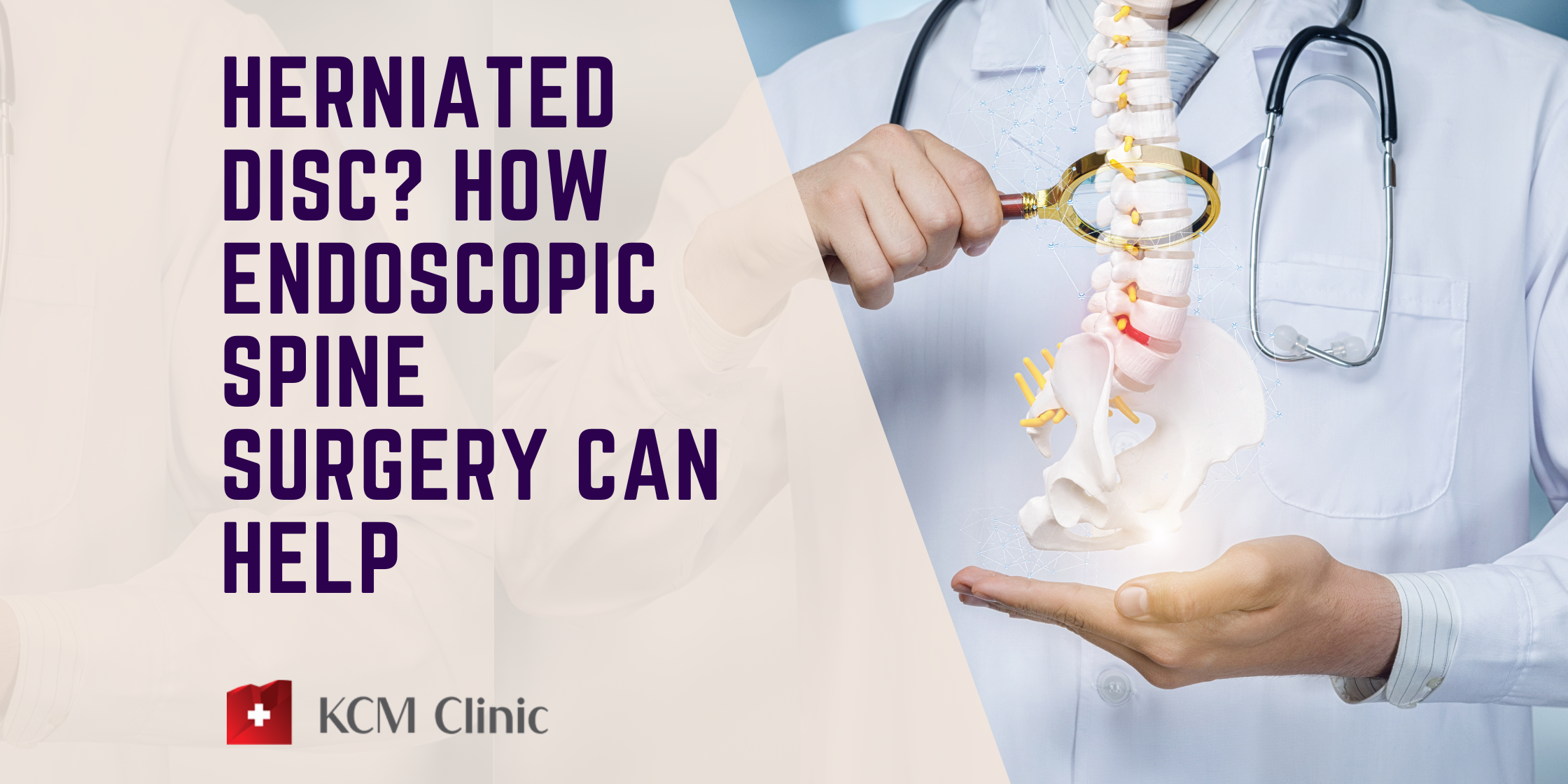Herniated disc? How endoscopic spine surgery can help
Disc herniations can be really painful, limiting our ability to perform day-to-day activities. When this happens and conservative treatments have not helped (physiotherapy, stretching, exercise, or corticosteroids), endoscopic spine surgery might be the only effective solution.
Endoscopic spine surgery is currently one of the most advanced techniques used in minimally invasive surgery. Thanks to its numerous advantages, including lower risk of injury, this procedure can be considered an ‘evolution’ of traditional open spine surgery. In addition, the patient’s recovery is quicker due to less blood loss and less disruption of the musculature.
What is endoscopic spine surgery?
Endoscopic spine surgery is a minimally-invasive surgery procedure. This method allows surgeons to operate on herniated discs, spinal stenosis and other pathologies using a thin tube combined with a small camera and optical instrumentation; this technique allows operations to be performed through very small incisions. Thanks to the fact that the endoscope’s camera is connected to high-resolution monitors, surgeons can see the area they are operating on in great detail. The surgery is carried out with extreme precision making just a few small incisions, reducing discomfort for the patient.
Why is endoscopic spine surgery performed?
Usually, endoscopic spine surgery is used on patients suffering from a herniated disc or lumbar canal stenosis. They might have already undergone an unsuccessful lumbar spine operation. In some cases, patients have never undergone surgery, but conservative treatments have not been successful.
There are different areas where endoscopic spine surgery can be performed, depending on the location of the hernia and where pain is located: these are the lumbar, thoracic, or cervical areas. Here are the different medical conditions that can be treated with endoscopic spine surgery:
- A protrusion or a disc prolapse in the cervical spine
- Foraminal stenosis: narrowing of the intervertebral foramen in the cervical spine
- Spinal stenosis in the cervical spine, with or without pressure on the spinal cord
- Advanced degenerative changes of the vertebral bodies in the cervical spine
- Other conditions of the cervical spine, depending on the doctor’s assessment
- Torn disc or chronic radiculitis (shooting pain down the leg)
How does endoscopic spine surgery work?
Endoscopic minimally invasive spine surgery is performed using a general or local anaesthetic. In both cases, you will not feel any pain as the treated area will be completely numb.
The first step of the procedure consists of making a 15-millimetre incision and introducing an endoscope. A dilator will be used to keep the incision open. This will allow the surgeon to see live images of the inside of the spinal canal. The main objective of the procedure is to try to remove the herniated vertebral disc tissue with the help of forceps. This is performed from the inside of the herniated disc, so the risk of damaging the spinal cord is drastically reduced. This will help relieve any compressed nerves. In addition, with this technique, it is possible to introduce medication more directly, as it’s easier to reach the areas where pain is located. At the end of the procedure, all instruments are removed and the incision closed.
The duration of an endoscopic minimally invasive spine surgery is typically between 30 minutes and 1 hour.
How do you prepare for endoscopic spine surgery?
If you think endoscopic spine surgery might help or if your doctor has suggested this procedure, get in touch with us. One of our patient coordinators will get back to you to ask you questions about your current health and explain how the procedure works in detail. In order to assess your eligibility for endoscopic spine surgery, you will need to send us an MRI or CT scan of your spine, performed within the last 6 months. Make sure you pack your test results with you when you visit our clinic, including the CD. The test description alone is not sufficient.
You will be informed whether you need to perform other medical tests; this will be assessed by our neurosurgeon, Dr. Arkadiusz Granek, who will also perform the procedure. Once you’re admitted to KCM Clinic, you will also have an anesthesiological consultation. You will most likely stay at our clinic for two days. Please also consider that you won’t be able to drive a car for some time after surgery. We offer pick-ups and drop-offs to and from the airport to all our international patients to make your experience on site as worry-free as possible!
Post-surgery: How’s recovery like after endoscopic spine surgery?
Usually, the patient is admitted in the morning, and during the same morning the operation is performed. The next day, the patient can go home wearing a lumbar corset.
Overall, recovery is faster than with traditional spine surgery. You should be able to go back to your life as soon as you leave the clinic. Painkillers may be prescribed to treat initial pain and discomfort. Make sure you observe how your body responds to surgery. While most patients feel better right after the procedure, always be careful and share any doubts you might have with your doctor.
Also remember to avoid any strenuous activity or heavy lifting for about 6 weeks after the procedure. Then, you can resume your regular workout routine.
Right after surgery, you will be recommended physiotherapy and rehabilitation, a very important step after this type of surgery! At KCM Clinic, you will be followed by Dr. Krzysztof Suszyński, a specialist in physiotherapy, who will supervise your physiotherapeutic treatment before and after the procedure.
Send Request
Register
Visits, hospital procedures
Bariatric Surgery Center
Plastic Surgery Center
Spine Surgery Center
Dental Clinic
OMEGA Imaging Diagnostic Center
Work hours
KCM Clinic Wrocław
Chat KCM Clinic
Locations
KCM Clinic Jelenia Góra
KCM Clinic Wrocław
Parking








